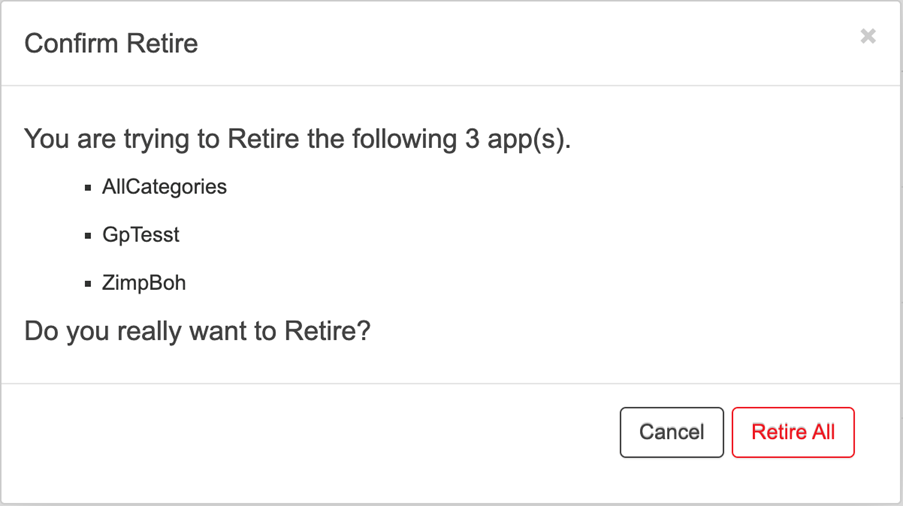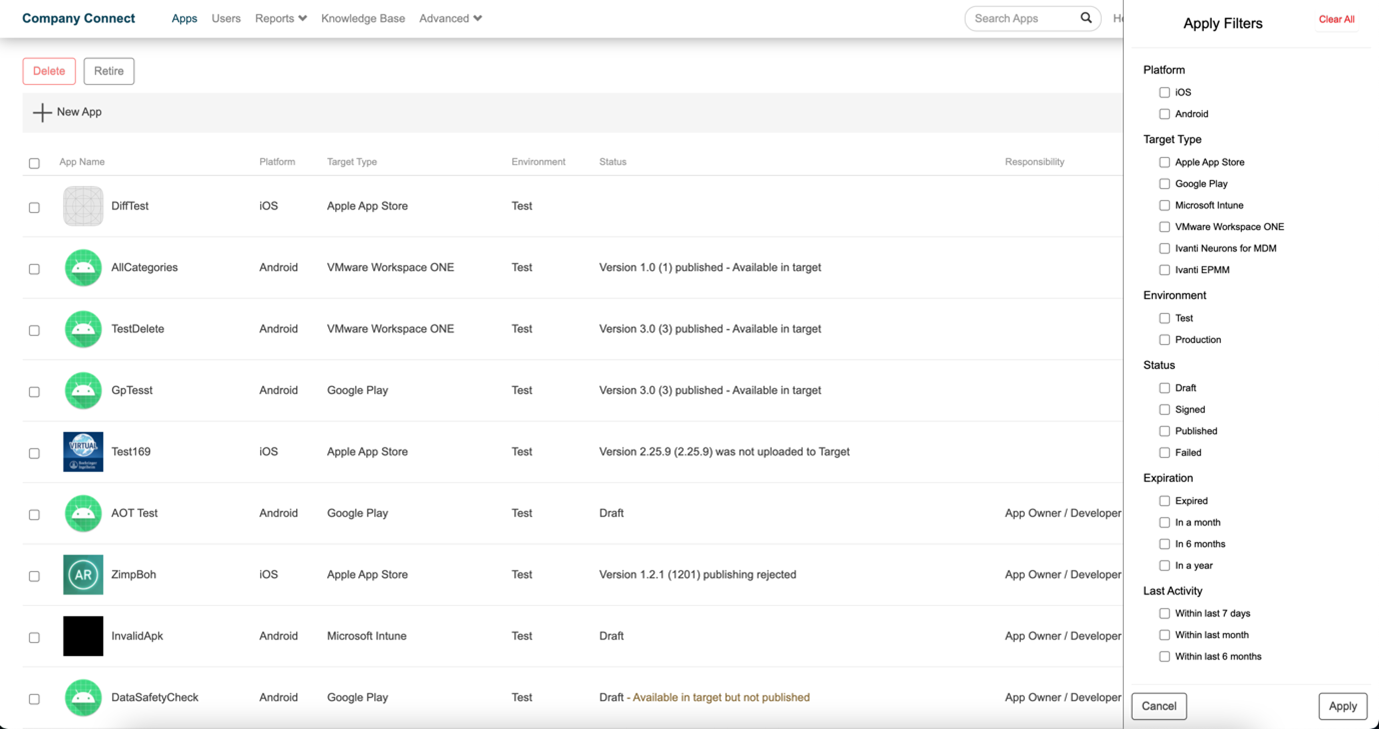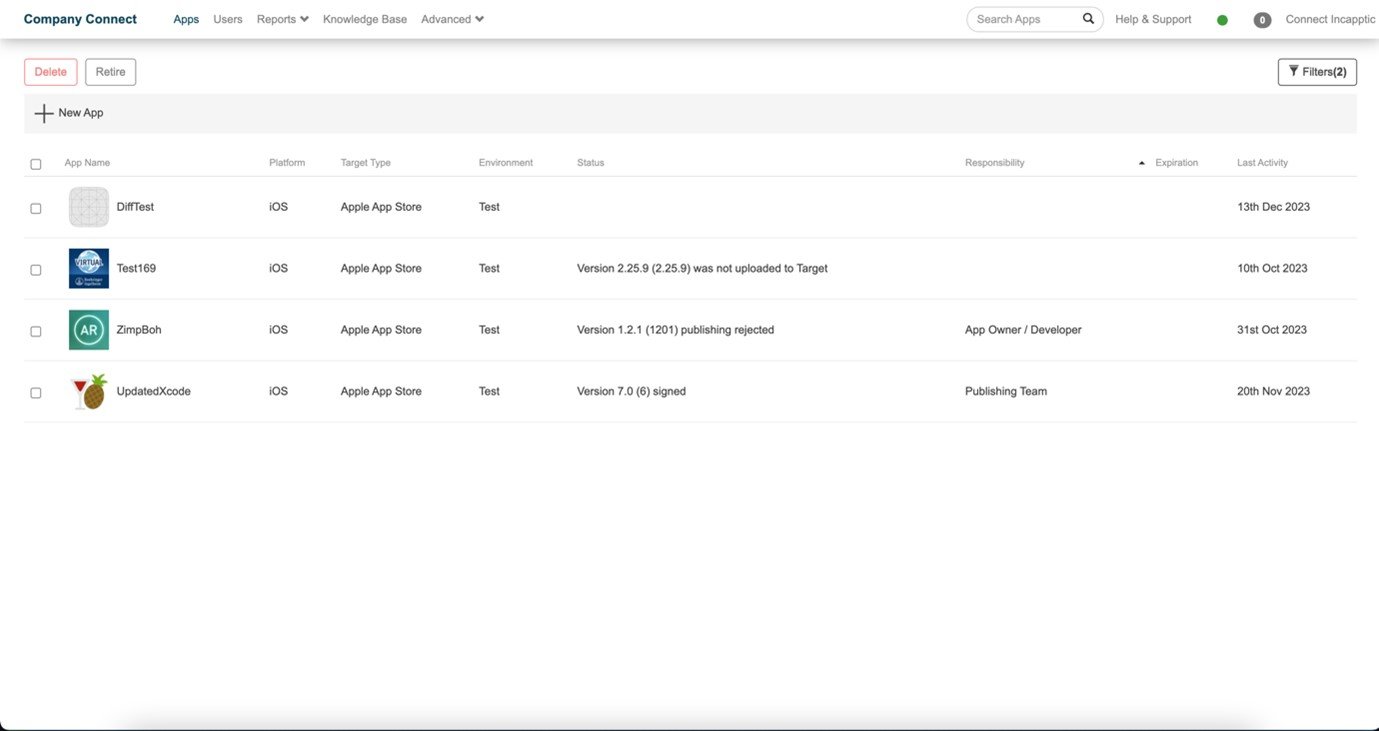Using the Ivanti incapptic Connect Apps page
The Apps page is the home page for your Ivanti incapptic Connect applications. Your applications and accompanying information are displayed here.
Figure 1. Ivanti incapptic Connect Apps page

You can find the following information on the Apps page:
If an option or a button isn’t visible, then the option is not enabled on your system.
Filters in App dashboard
The app dashboard contains a Filters option.
The filter types are as follows:
|
Filter Type |
Description |
|---|---|
| Platform | iOS and Android are the available platform filters. |
| Target Type | All target types that incapptic supports are included in the available target type filters. |
| Environment | Test and Production are the available environment filters. |
| Application status | Draft, Signed, Published, and Failed are the status filters that are available. |
|
Certificate Expiration |
Expired or expiring in 1 month, 3 months, and 6 months are the available expiration filters, which are dependent on the remaining time for expiry. |
|
Last Activity |
The application's last activity filters are activity-time-based and include the following: activity during the last seven days, last fifteen days, last month, and last three months. |
-
Log in to the incapptic portal.
-
Click Filters.
All users can use filters.
-
Select the filter options to apply filters, and click Apply.
Even if you don't click the Apply button, the filters you have chosen will still be stored after a certain amount of time has elapsed because the incapptic home page is re-rendered after that interval.
-
You can click the overlay or Cancel to close the filter side drawer.
-
After applying the filter, the applications are displayed as per selection on the app dashboard. The app dashboard Filters button displays the total number of filters that have been applied.
-
Click Clear All in the sidebar filters to clear the selected filters.
Filters work in browser session storage. Once we do a hard reload of the page, then the filters will be cleared from session storage.
-
Admin users have the provision to perform actions on selected apps, such as retire and delete. You can Delete and Retire the selected application from the app dashboard.
-
Only admin users have the provision to perform the below actions.
-
Retiring applications sends the selected apps to the retired apps section, where users can perform the Delete or Restore action.

-
Admin can perform a bulk delete action, which deletes the applications and their footprints from the database and the targets (differs based on target type).
-
When admin clicks Action, a confirmation dialogue appears, and a notification is displayed at the bottom after confirmation is complete.

-

